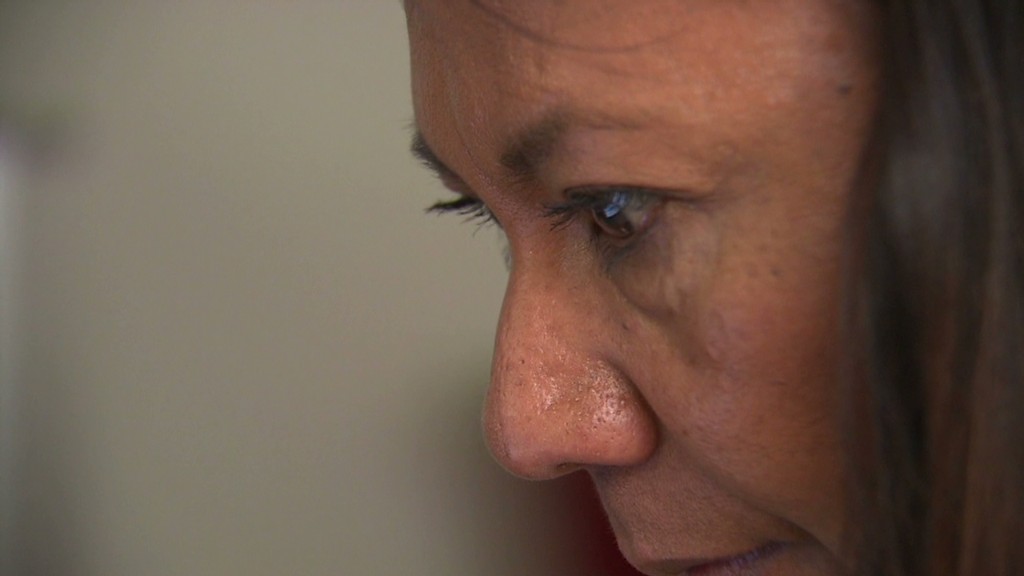
As the countdown to a fiscal cliff reaches its final days, four key tax breaks for parents are hanging in the balance.
Lawmakers and President Obama continue to butt heads about which tax cuts should be extended. And unless a deal is inked by the end of the year, the Child Tax Credit, Earned Income Tax Credit, Child and Dependent Care Credit and the American Opportunity Credit will revert to lower levels on Jan. 1.
If this happens, many families will be worse off by hundreds -- or even thousands -- of dollars, according to Roberton Williams, a senior fellow at the Tax Policy Center.
Some families could take a hit on several fronts if they typically qualify for more than one tax break.
Related: Fiscal cliff -- Years of self-made messes
For example, a low-income couple with three kids will lose as much as $1,500 from expiring provisions of the Child Tax Credit. If their income is low enough, they could also see a smaller refund from the Earned Income Tax Credit, and benefits from the Child and Dependent Care Credit could be reduced as well.
1. Child Tax Credit
The Child Tax Credit allows lower-income parents to claim as much as $1,000 for each child under age 17.
Under the Bush tax cuts, the maximum value of the credit was doubled to $1,000. Obama's 2010 Tax Relief Act then extended the credit until the end of this year and made it so families whose income tax is lower than the credit's value could receive more of the credit in a cash refund once any tax liability is zeroed out. The credit phases out for married couples whose income is $110,000 or for single people with income of $75,000 or more.
Should the Bush and Obama provisions expire, the tax break will drop back to a maximum of $500, and only working families with three or more children will be eligible to receive cash refunds.
A couple with two children could therefore end up paying an added $1,000 in taxes next year. Since they have fewer than three children, they will no longer be eligible for a cash refund. And if they don't owe any taxes, they can't apply the credit either, said Williams.
2. Child and Dependent Care Tax Credit
This credit allows working parents -- or those looking for work -- to report up to $3,000 of child care-related expenses per child, up to a maximum of $6,000 per family. Families can receive up to 35% of their expenses as a credit, with lower-income families receiving the highest percentages.
Prior to the Bush tax cuts, parents could only report up to $2,400 per child or $4,800 per family, and families received a maximum credit of just 30% of expenses.
Should the tax breaks expire, the credit will revert to these lower levels. That would mean the largest credit that parents with two children could receive next year would be $1,440, compared to $2,100 currently.

3. Earned Income Tax Credit
The government estimates that the Earned Income Tax Credit lifts millions of Americans out of poverty each year by allowing them to hold onto more of their earnings.
The more children you have, the more money you receive.
For example, married couples filing jointly with income below $50,270 and three or more qualifying children can receive up to $5,891 this year. If a married couple doesn't have any qualifying children but has income below $19,190, the maximum credit drops to $475.
Related: Don't overlook this $6,000 tax credit
Since 2001, the income thresholds at which the credit begins phasing out for married couples were raised by about $5,000 by the Bush and Obama tax plans. But at the end of this year, phaseout thresholds for married couples are scheduled to revert to the lower income levels that apply for single filers.
Obama also raised the maximum credit for families with three or more children from 40% to 45% of a household's earnings (up to a maximum amount), and that rate is slated to go back to 40% in 2013. This decrease could amount to a loss of more than $600 for families with at least three children who had previously claimed this credit, said Williams.
4. American Opportunity Tax Credit
Introduced as part of Obama's 2009 stimulus plan, the American Opportunity Tax Credit aims to help lower-income families pay for college. It replaced the Hope Credit and allows qualifying families to claim up to $2,500 each year for four years.
Obama made the credit 40% refundable, meaning a family that qualifies for the full $2,500 can receive $1,000 of the credit in cash and the rest must be applied toward their tax liability. That refundable $1,000 is especially important for low-income families, since they often don't have big enough tax bills to apply a non-refundable credit. Often, the refundable amount is the only portion they receive.
But the American Opportunity Tax Credit is scheduled to revert to the Hope Credit. At that point, the maximum credit will drop to $1,800. Also, families will only be able to claim the credit for two years and it will no longer be refundable.

